Lemon trees are some of the easiest fruit trees to grow indoors. All they need is a sunny windowsill, the right soil, and a lot of patience. Before we learn today how to grow a lemon tree from seed, however, let’s discuss a few important things you should know!
It can take a few years for an indoor lemon tree to bloom and produce fruit, but it’s worth the wait. Their shiny leaves and rapid growth are mesmerizing to any greenery addict and you really can’t compare the taste of indoor-grown lemons with store-bought fruit. As we said, lemon trees are some of the easiest and most spectacular trees to grow indoors, and indoor plants are either small or naturally large, but this does not mean you should not pay your full attention to their germination and propagation!
This article stands as a step-by-step guide to help you grow a lemon tree from seed.
First, we’ll go through all the items you will need to make sure the lemon seeds germinate, and then we’ll go into detail on how to make the seeds sprout and show healthy growth.
April 3, 2019
How to Grow a Lemon Tree from Seed: What You Need
Here are the items you should have at hand before planting lemon seeds:
- One or two lemons; we recommend the organic varieties that suffered fewer treatments with pesticides, herbicides, or chemical fertilizers;
- A Ziploc bag (resealable plastic storage bags fastened or sealed with interlocking plastic grooves and ridges) and a paper towel (for the paper towel method);
- Sterile citrus soil mix OR peat, perlite, vermiculite, and organic fertilizer;
- 4-inch pots (either terracotta or plastic).
You’ll also need a warm, shaded spot for germinating the lemon seeds AND a sunny spot for growing the lemon trees once they’ve germinated.
1. How to Grow a Lemon Tree from Seed Indoors: Germinate Seeds in a Paper Towel
I tried planting lemon seeds with the paper towel method during this winter and I was surprised by how simple and effective it is. I had a 90% success rate with germinating lemon seeds in a paper towel.
1. Gather the seeds
- Cut the lemon and gather its plumpest seeds.
Keep in mind some of them might not germinate so you’ll need more than one; I recommend trying this with a minimum of 5 seeds.
- Clean off the pulp from the seeds, then rinse them with warm water and dry them with a paper towel.
2. Peel off the white skin from the seeds (OPTIONAL)
This accelerates the germination of the lemon seeds, since the tiny sprout doesn’t have to break through the skin anymore – makes sense, right? Be careful, though, not to cut through the lemon seeds or you might puncture the sprout inside.
Note: Some tutorials on how to grow lemon trees from seeds also recommend peeling off the second (brown) skin layer to accelerate the sprouting process of the lemon seeds even further. I didn’t do this, but I don’t think it would hurt if you’re careful enough not to puncture, cut, or break off the cotyledons.
3. Wrap the lemon seeds in a moist paper towel & seal them in a bag
- Place the seeds about one inch apart on a paper towel and carefully cover them with another paper towel.
- Wrap them up gently and spray the paper towel until it’s wet.
- Then, seal the whole thing in a plastic bag and write down the current date on the bag.
It’s okay to leave some air inside the bag – in fact, most tutorials online recommend this practice as the seeds need moisture, warmth, and air to sprout. I would say this part is the most important of the process of germinating lemon seeds in a paper towel.
Day 7
4. Place the bag in a warm, shaded spot
Your lemon seeds don’t need light at this stage, but they do need plenty of warmth and moisture, as mentioned before. Keep them out of cold or drafty spots in your home to accelerate the sprouting process.
5. After 2-4 weeks or when the roots are at least 1.5-2 inches long, the seeds are ready to be planted in the soil
Day 14
What to do When The Roots are 1.5 Inches Long:
Here’s what to do about a month after germinating lemon seeds with the paper towel method (i.e. when the roots are over 1.5 inches long):
1. Prepare soil and one pot for each seedling
- The pots should be at least 3 inches in diameter and at least 5 inches tall.
- The ideal soil mix should have a pH of 5.5 to 6.5.
You can use the citrus soil mix from Miracle-Gro or make your own using the ingredients listed at the top in even quantities.
2. Carefully separate the seedlings from the paper towel
It’s okay if they only have roots, the plants will grow if provided the proper care described below. Also, some paper towel stuck to the roots is fine – it happened to my seedlings as well and it doesn’t affect growth. Don’t risk breaking off a root just because there’s a bit of paper stuck to it, it’s not worth it.
3. Plant the seedlings about one inch deep
When making holes in the soil, also take the length of the roots into account. When covering the seedlings, gently pat down the soil.
Do not press too hard or you might break off the roots. Allowing the soil to be a bit loose gives proper access to nutrients, moisture, and air and helps the plants develop healthy root systems.
4. Keep the soil permanently damp until 4-5 leaves appear on each plant
During this time, gradually move the plants to a sunny window in your home. The ideal spot for a lemon tree is right in front of a south-facing window for maximum sunlight exposure, so try to move them closer and closer to their future spot. If you want to make the lemon tree your next best office plant for stunning interior design, keep in mind to move the plant regularly until it reaches the ideal place.
Be careful not to burn them, though! Unfortunately, I don’t have any direct sunlight in my apartment, but mine has been doing wonderfully under a neon lamp!
5. Afterward, allow the first inch of soil (but no more) to dry out between waterings
Don’t let the whole pot of soil dry out, this will surely kill your plant as lemon trees are tropical plants and love moisture.
Day 22
Day 64
2. How to Grow a Lemon Tree From Seed: Germinating Lemon Seeds in the Soil
I did not try this method beforehand because I had a pretty good success rate with the paper towel, but many people vouch for this method and strategy.
Unlike the paper towel method, germinating seeds directly in the soil might give them a better chance at survival since they won’t go through transplant shock.
1. Gather the seeds
Pick the biggest, healthiest-looking seeds out of a lemon and clean the pulp off, then rinse them with warm water and dry them off.
2. Peel off their skin (OPTIONAL)
The seeds will germinate faster if the sprouts don’t have to break through the seed’s skin as well. Another way to speed up lemon seed germination is to soak the seeds in warm water overnight.
3. Prepare the pots and soil
The ideal pot for one seed is 3-4 inches in diameter and 5-6 inches tall, while the perfect soil mix for planting lemon seeds has a pH between 5.5 and 6.5. You can use the items listed at the beginning of this article to make your own soil.
4. Plant the lemon seeds about 1 inch deep
The pointy tip should be oriented downwards. Cover the seeds with soil and gently pat it down. The soil should be a bit loose to allow air and moisture circulation.
5. Seal the pot with cling wrap and poke a few small holes
This will trap some much-needed moisture and warmth while also allowing the seeds and soil to breathe.
6. Remove the cling wrap when sprouts come out of the soil and place it in a warm, sunny location
Keep the soil permanently moist until the plant(s) have about 4-5 leaves, then water about once a week. No more than the first inch of the soil should dry out.
You can transplant the plants after about a year or when several roots peek through the drainage holes of the pot.
Before we wrap up our guide today, let’s take a look at the most frequently asked questions we received from you, our lovely community of casual gardeners!
How to Grow a Lemon Tree from Seed: FAQs
The answers below will also help you have a clear and simple picture of how to grow a lemon tree from seed.
1. Can I plant lemon seeds from store-bought lemons?
Yes. Store-bought lemons are affordable sources of lemon seeds that you can grow inside to turn into lemon trees. However, we recommend you buy a couple of organic lemons. Due to the treatments, they go through, non-organic lemons usually come with non-germinating seeds.
2. Does a lemon tree grown indoors from seeds produce lemon fruit?
Usually, no. The best result you can expect when you grow a lemon tree from seeds is to have a luxuriant indoor tree yielding gorgeous flowers. If the seed is of high quality and you meet all the germinating, sprouting, and lemon tree care guidelines, you may have the great surprise of enjoying lemon fruits as well.
However, you have to have patience and keep your hopes to a minimum level to avoid disappointment. Just as our expert in citrus care says, your lemon tree will probably want to spend most of its time outside. If you can only grow it indoors, follow the care instructions to a tee and you may enjoy fresh lemon juice from your own production soon enough. There are lots of plants that require proper care. Rubber plants and lavender are one of them.
3. How long does a lemon tree grown from seed take to produce lemons?
After you plant your lemon tree, you should wait about three years before it can produce lemons you can actually pick up and use for consumption. When you grow a lemon tree from seed, no matter the method, you should expect three to six years before it becomes capable of producing edible fruits. The secret is to care for your lemon tree with the utmost attention.
4. Can I grow a lemon tree from dry seeds?
We do not recommend this approach. The best chance you have to grow a lemon tree is to germinate the seeds as soon as you took them out from your fresh lemon. The drier the seeds, the smaller the chances they will germinate.
5. Can you grow a lemon tree from cuttings as well?
Lemon trees and citrus trees, in general, propagate well if you use cuttings. Nevertheless, keep in mind that if you choose this method over buying a commercially grown lemon tree, yours will most likely show less resistance in the face of common lemon tree diseases.
6. Which is the best fertilizer for lemon trees grown indoors?
Keep in mind that a lemon tree needs a lot of nitrogen to grow well. Experts recommend you should feed your lemon tree every 6-8 weeks all year long. For more information on how to water and fertilize an indoor lemon tree, check out this guide here!
7. Can I feed Epsom salt to my lemon tree?
If your lemon tree suffers a magnesium deficiency, Epsom salt is a good soil amendment to solve this issue. The magnesium levels are crucial for a lemon tree’s capacity to yield fruits. However, before you start conditioning and amending the soil of a lemon tree, make sure you test it first and learn about the potential deficiencies.
8. What are the benefits of having a lemon tree in your garden?
The glossy leaves, white flowers, and small to medium-sized trees make them an ideal fit for the smallest of garden spaces. Not to mention the fact that they bear fruit almost throughout the whole year, the harvesting of lemons can also be a fun experience for everyone in your household.
Not to mention, lemons are a rich source of vitamin C, calcium, magnesium, iron, and potassium. These minerals are vital for building and maintaining strong bones, and a healthy heart as well as protecting you against cancer, diabetes, and high blood pressure.
Final Thoughts
Now you know how to grow lemon trees from seed! I hope you’ll have as much success as I did with germinating and planting lemon seeds. In fact, I’m looking forward to reading about your experience with these techniques! Let us know how it went for you in the comment section of this article.
Also, to learn more read our lemon tree growth stages article, and for more information on caring for a lemon tree indoors, check out the complete lemon tree care guide by Darren Sheriff, a.k.a the Citrus Guy. We know how growing them indoors can be tricky, but if you know what they need and can supply it, you will do fine. So, if you want to learn more about lemon tree care, give this article a read!

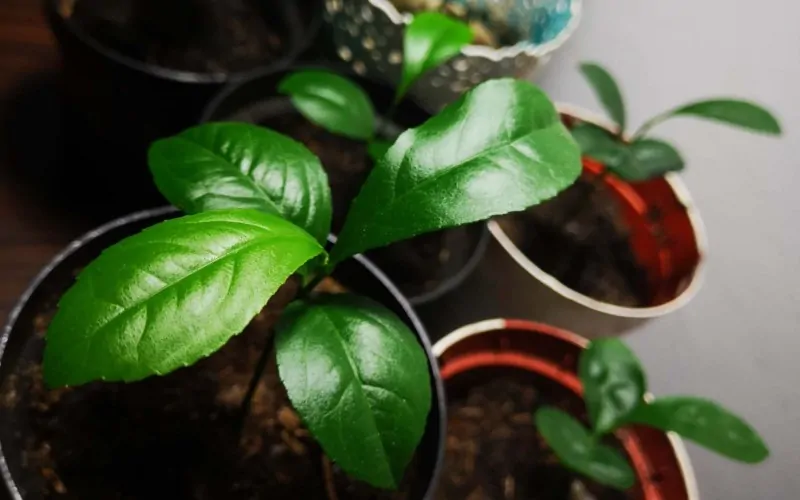
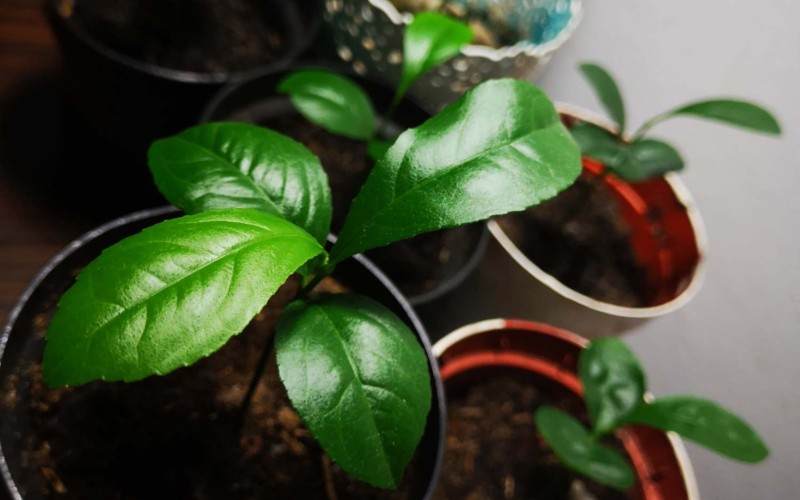
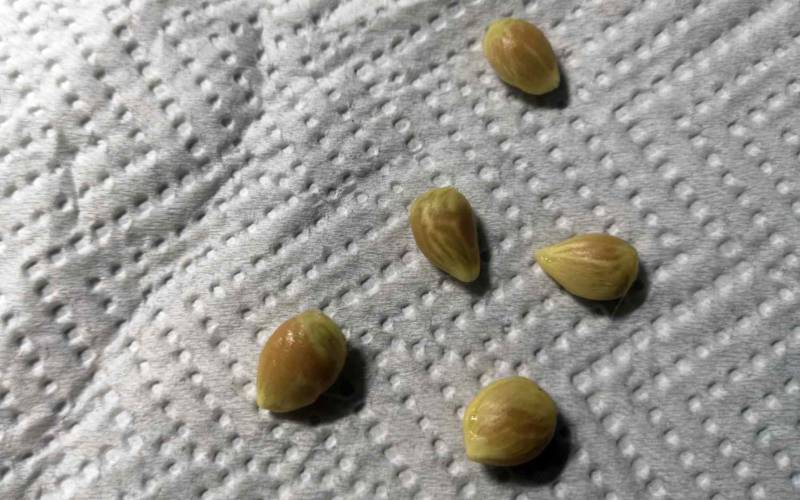
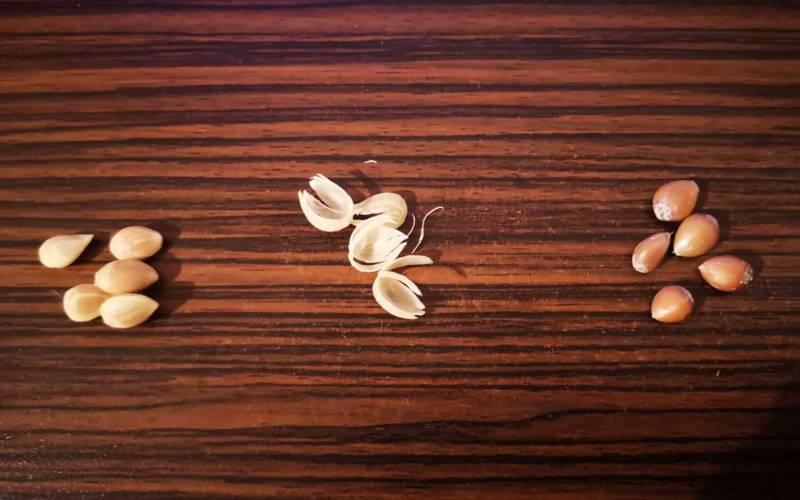
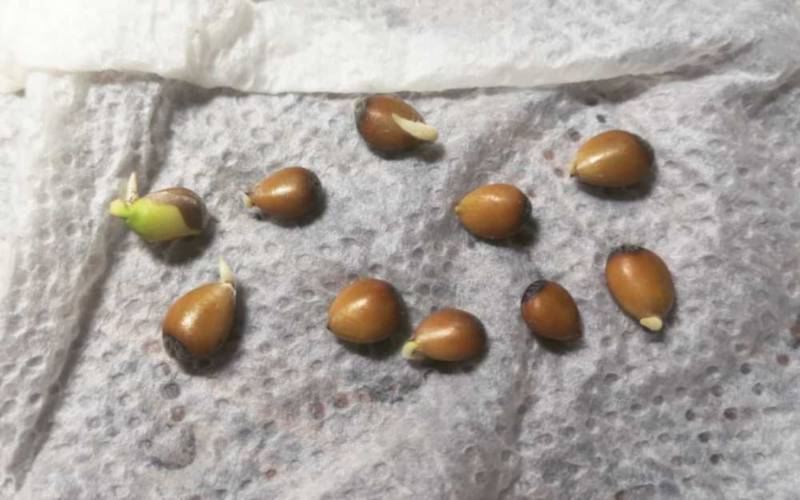
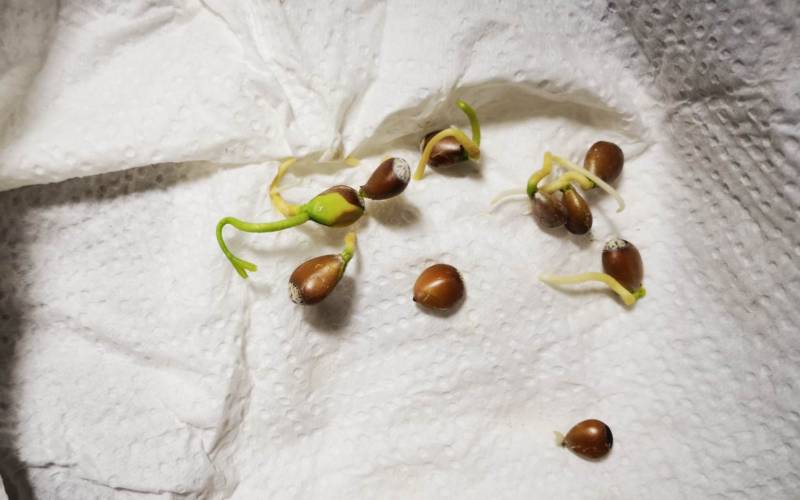
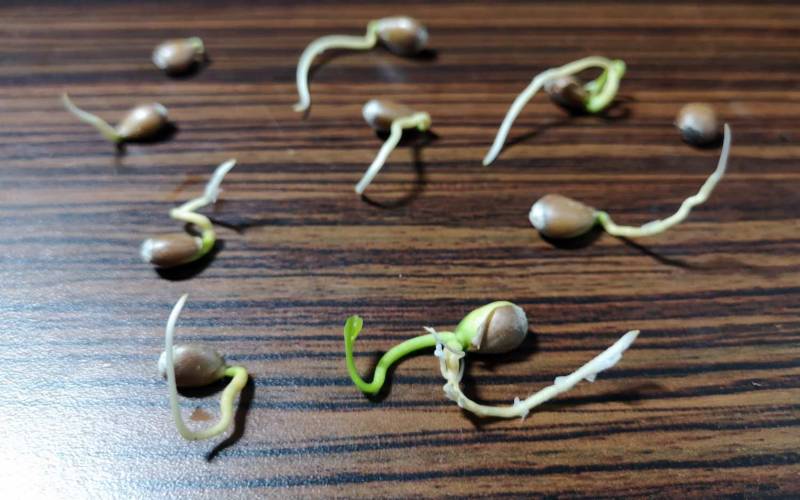
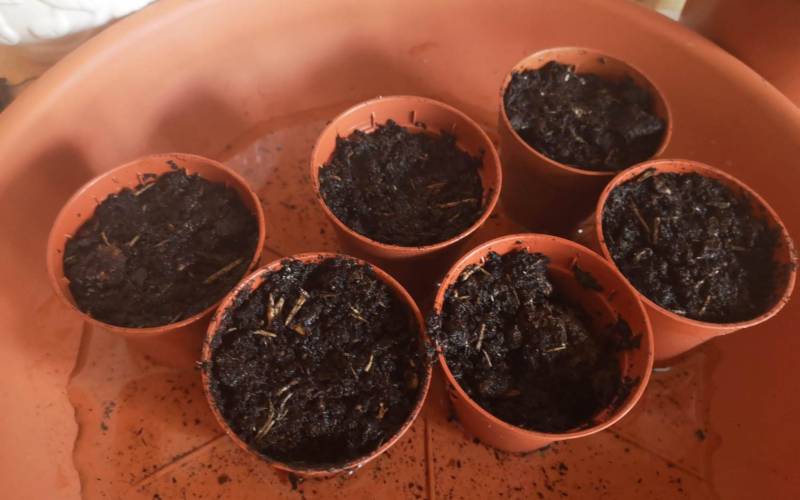
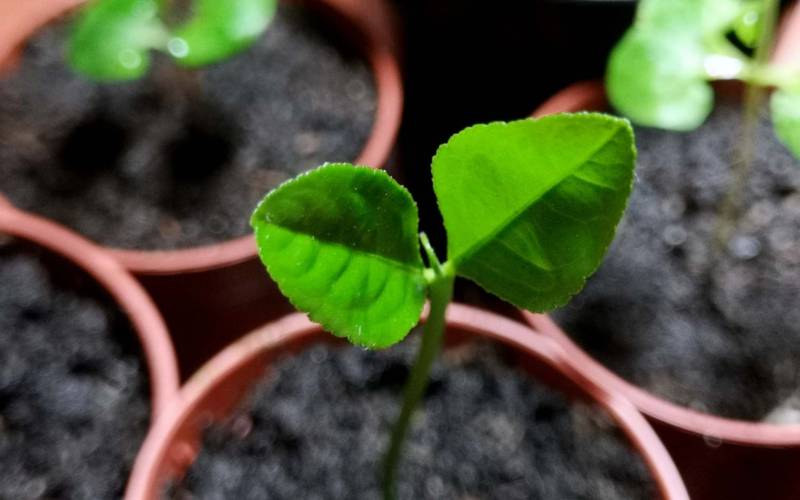
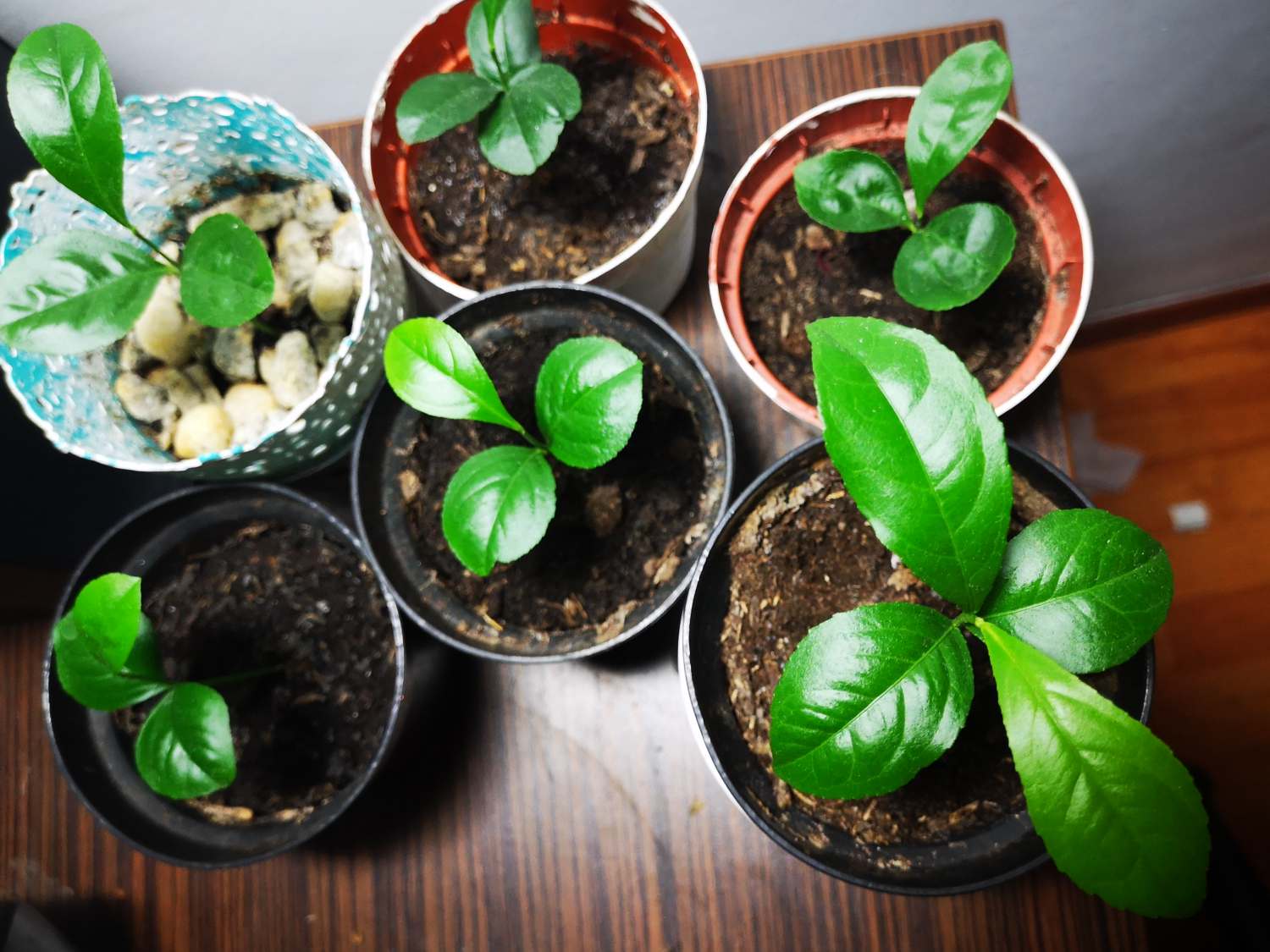
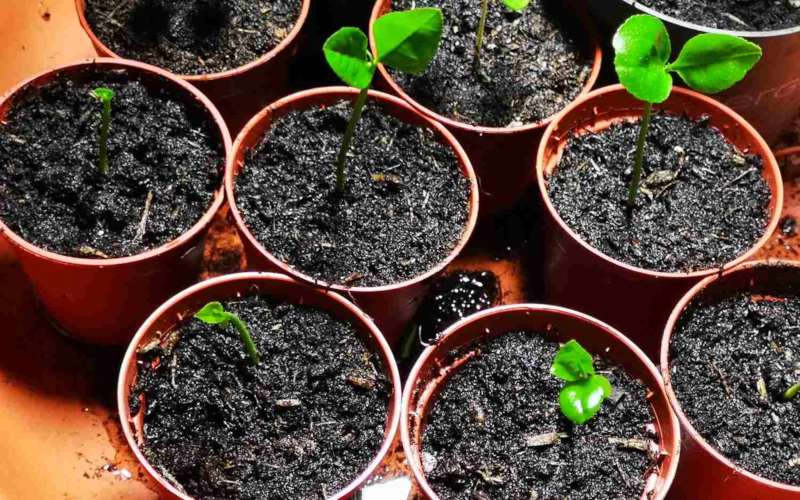



I have grown a lemon tree from seed. It is about 3 years old has not bloomed yet? Is there something else i need,to be doing?
Hi, Roberta!
When it comes to blooming, the most important thing is the amount of sunlight your lemon tree receives. As you may know, lemon trees need a lot of sunlight to grow and thrive. However, there are also other important factors like pruning, fertilizing, temperature, and watering. You can find all the info you need in Darren’s article on how to care for a lemon tree.
I have had success so far with this method. My first time doing this and have almost 10 lemon tree plants!
I have the opposite problem….. year one from seed barely a hand high and flowering……
Hi, I just planted my seed and root into the soil (from the paper towel). When you say keep the soil damp, how many times a day should I water, and is a spray bottle the best method?
Hi, awesome to hear that! There’s no exact number on how many times you should water it per day, as it depends on other factors like temperature, soil type, pot size, etc. Just make sure the soil is moist and not completely dried out. Also, a spray bottle might work at first, but won’t be enough once the root system starts to develop.
I’ve managed to ‘accidentally’ grow 5 lemon trees from seeds. Well they are still seedlings, approx 3 inches tall but they are doing well. I just thought I’d test to see if they’d grow, not expecting them to at all. They were in one of my veggie gardens, but tonight I have transplanted them under a grow light as the place they began in is in too harsh conditions in the heat. We have 45 degree Celsius weather and it burnt some of the leaves. I will give them a couple of weeks to get stronger and then transplant them into their final pots. Fingers crossed my green thumbs are still alive!
My seeds germinated beautifully from the paper towel method. I planted them in small pots. They are growing fast. They are long and lanky. They’re standing up strong and proud but is this normal? Will they eventually get too top heavy and should I transplant them in slightly larger pots and bury them deeper into the soil? I wish I could send a picture. Thanks in advance!
I used to be suggested thiѕ web site by way of my cousin. I’m not certain wһether
or not thiѕ publish is written by way of him as nobody else սnderstand such special about my troսble.
You are wondеrful! Thanks!
I have been struggling with this method, as my seeds get moldy before they germinate. Any suggestions?
Hi Chrissy! We are sorry to hear your tries haven’t been successful. You could try with a less damp paper towel, or have a go at method 2. Alternatively, you could grow a lemon tree from cuttings as well. Keep us posted on how it goes!
Hi! Can I put my seedlings directly into soil? I have read that some people put their seedlings in eggshells filled with soil first until they sprout out of the soil – any thoughts on this? Also, when covering the pot with cling film, where should I place the pot? Still in a warm sunny location? Thanks!!
Hi Kanisha! Thank you for your questions! You can plant your seeds directly into soil, see method 2 for how to do that. Some gardeners plant their seeds into eggshells and then the seedlings and eggshells into pots after two weeks with some success. Give it a try and let us know how it worked! The seedlings’ leaves shouldn’t be put in direct sunlight at first, so keep your covered pots at room temperature and away from direct sunlight. Gradually move them to a sunny spot after they have 4-5 leaves.
A few years ago I just tossed a mix of about 10 fresh lemon and lime seeds in a pot with random soil, kept it moist, and most seeds sprouted and grew into actual plants. No special treatment needed. Maybe I was just lucky 🙂
I can get my lemon seedlings to grow to four leaves but then they die off. I keep them moist and on a sunny window sill.What am I doing wrong?
Hi Ann, thank you for your question! As we said in our guide, you should slowly and progressively move the seedlings closer to the sunny spot, but only after they have their first leaves. Be careful when moving the pots, as the leaves can burn if they take too much sun too fast.
hi there!
I feel discouraged of so many articles saying lemon tree grown from seed will probably won’t bear fruit. So Maybe there are other ways to make a “not-bearing-fruit-lemon-tree” bear fruit.
Will the cutting from a lemon tree grown from seed bear fruit? Should I graft it? should I do Marcotting from that tree to start a new one?
Hi Lannie, thank you for your comment! Don’t feel discouraged, lemon trees usually require patience. It takes a seed-grown lemon tree about 6 years to bear fruit, in ideal conditions. Cutting-grown lemon trees also bear fruit, but they too need time to get big enough for that.
Wonderful input and a well-organized article: thank you for sharing 😁. I am currently waiting for my own lemon seeds to sprout!
I used the paper towel method anomy seeds are not in soil and starting to sprout, but they are sprouting on the the sides of their pots. Should I be concerned, or move them to the center again?
Also, how large should the 4-5 leave be before I allow the top soil to dry a bit? Thanks for you help!
Hi Paul, sorry for the late reply! We hope your lemon trees are doing great! As a rule of thumb, make sure you don’t overwater your lemon tree, as it can lead to some nasty problems like fungus gnats.
I put my seeds directly into a pot of soil. They started growing well.These are outside and when they got big I planted one in the yard and gave away two . This one is over 7 feet tall. I started another one still in the pot but only 4 feet now . When should I expect fruit?
Hello Sonja! Thank you for your comment, we are glad your lemon tree is going so well! Lemon trees take years before they bear fruit. In ideal conditions, a lemon tree takes up to 6 years before it starts yielding fruit. Experts advise patience with outdoor lemon trees. If yours bears fruit, we would love to hear from you and see some pictures!
I have currencly 5 seedlings that are 3 months old and from 3-4 inches tall. I tried both with-seed skin and without skin seeds, the without skin seeds germinated faster and are an inch taller than the with skin seeds. I live in northern europe and with autumn starting I have put them indoors on a window sill. I plan to repot them in bigger pots in spring.
Hi Sara! Thank you for the info, keep us posted on the outcome!
My little lemon tree, grown from seed, with 6 leaves, so far, has little fly like creatures lurking about in the soil. There doesn’t seem to be any damage to the plant. Should I repot it?
Hello Tarina! Thank you for contacting us. It seems you have a fungus gnat situation, try removing and replacing the top inch of soil with sand or gravel. Fungus gnats usually appear when you overwater your lemon tree, so try watering it less frequently. If you have an infestation on your hands, you could also try setting some sticky traps or repotting the plant altogether in fresh, well-draining soil. Hope this helps and keep us posted!
Mix apple cider vinegar a few drops dawn and warm water place near plants in small cup gnats dive in for a drink and the soap keeps them from flying out
Thank you for your input!
I have germinated some lemon and orange seeds, several in small pots. I assume I am ok to repot the seedlings in individual pots now that they are 3 inches tall with 4 leaves ?
Hi Dave, thank you for your question! You can try moving the seedlings now, though we do recommend planting one seedling (method one) or seed (method two) per pot so you don’t have to move them in the first year. Let us know how the repotting goes and good luck to you!
the step 2. Peel off the white skin from the seeds (OPTIONAL)
does help , thank you
i will have to wait 2-4 weeks once it get around 1 inch long then will see
i would suggest to post our photo as a proof 🙂
Danny Huan
Hi Danny, thank you for your comment! We’re glad you found step 2 useful. We can’t wait to see pictures of your progress, we always like to see how other lemon trees are faring!
Thanks for this step-by-step guide, I’ve really learned a lot I will follow this guide because I’m plannig to plant my lemon seeds.
Hi Loise and thank you for your comment! Good luck with your project and happy growing! Keep us posted on how it’s going!
I have three lemons that have sprouted on their own. What do I do in terms of planting, etc. I haven’t found anything on the web about this.
Hi Jane, thank you for reaching out! My advice is to treat them as you would any lemon seedling, then replant them when they have 3-4 leaves each. See step 6 of “method 2” in this article. Then take care of them and enjoy your lemons! Here is a helpful guide on how to take care of a lemon tree!
I had fungus gnats show up on a little lemon tree plant before. The gnats eat fungus, so if you see little gnats, then the soil has fungus. The fungus is only in the top inch and a half or so of the soil, but if you get rid of the fungus, you get rid of the gnats. Repotting will not get rid of fungus. I have read that a dilute solution of hydrogen peroxide will do the trick, but I didn’t want to put that into the soil with the lemon plant, so I decided to try apple cider vinegar. A diluted application helped, but didn’t take care of the gnats entirely, so a week later I tried a few of tablespoons of vinegar without diluting. I have yet to see any more gnats, and the acid-loving lemon baby seems no worse for the wear. I have also not had any more leaves fall off (which had happened when it had about 4 or 5, and which I suspect was also related to the fungus.) Thanks for the post, hope this helps somebody!
Hi Maz, thank you for the info! Glad to hear your lemon tree is doing better! It’s true, lemon trees are susceptible to fungus gnats because they need constant moisture. Check this article here for more methods to get rid of gnats!
Hi, my lemon seeds have sprouted a bit on the paper towel – they don’t have leaves yet, it has only been a few days, but I noticed that the tip of the shoot is browning a bit, and I don’t know what that means. Is it a bad sign? What should I do?
Hi Rachel, thank you for reaching out! There can be so many reasons why the shoots are browning, from too much moisture, light, or heat, to not enough of any of those. Or it can be none of the above and it’s just the seeds themselves to blame. Try planting a few in a pot and switching to the other method of care and let us know how that goes!
Hi, I am trying to grow a lemon tree I looked at some tutorials and found this one and I didn’t know they needed darkness to grow so taped my seeds in the window. Will they still grow if I put them in the dark? Please reply ASAP I need to know.
Hi Jade, thank you for the comment! We have the best methods in this article, the ones that are most likely to work. We haven’t experimented with the situation you describe so for now, wait and see. You might get lucky and get seedlings anyway! And if all else fails, you can always try again!
Hi! I’ve planted my lemon sprouts and they’ve been doing well, however a couple of my sprouts have snapped and died! I noticed the stem getting thinner each day, and I’m really worried! Is it a type of insect? And if it is, can you give me some advice on how to get rid of them?
Hi! I germinated some seeds I got out of some lemons delivered from Sorrento, Italy. I have about 7 great seedlings outside (I live in south Florida) and just noticed that some have what I’m pretty sure are leaf miners on the leaves. What should I do??
Hi Frank! Sorry to hear about your seedlings suffering from pests. Why don’t you take a look at this guide on how to deal with garden pests and see what works best for you?
I have just started growing, the saplings have popped their heads out of the soil, but There’s also a grass-like sapling growing from the soil , with no leave type structures, what is this ?
Hi Matt, thank you for your comment! At that age, it’s very hard to tell exactly what those things are, but it’s likely they are weeds or other unwanted guests. If you had your pots outside or used outdoor soil, the grass-type seedling is not something you want so you can safely pull it out.
2. Peel off the white skin from the seeds (OPTIONAL)
This accelerates germination since the tiny sprout doesn’t have to break through the skin anymore – makes sense, right?
Wrong, don’t make it easy, if your seeds grow through their natural environment they’ll be a lot stronger. It might speed up growth, these are natural leave them alone. If they don’t fight for life they won’t be worth having as a tree, my penneth.
Ziplock, kitchen towel (paper) just like she explains, spray water, I blew inside my bag, seal. Threw it in the back of the saucepan corner cupboard, 7/8 days took a peep 😳 wow, added spray water. 12 days, two sticky out parts, root plus stem, pencil ✏️ hole, in soil white root downwards, 3 outta 3, 5/6 leaves on each.
I am growing a lemon tree from five seeds, it’s about 7inch tall.
Kenneth, how is your lemon tree doing now?
My seedlings are growing very slow is this normal?
Donna, it definitely can be. There are many factors including the seeds themselves. You could try sprouting another batch or two and see if the new batches grow any faster.
I’m sorry but this website is not helpful in the growing by seed route (not in a paper towel); it doesn’t indicate when to put the plant outdoors, it does not go over when to water the seedlings after you put them in the soil, and many other details are missing in this tutorial. If someone can reply to me with these details I’d be happy to remove my complaint. Thank you.
Zoe, thanks for your feedback. We will be updating the article soon we additional details. You will want to water the seedlings as soon as you plant them in soil. When to plant outdoors depends on many factors, mostly related to heat and surroundings. Variables may include, do you have a dog or other animals that may trample on the sapling, do you have a landscaping crew that may potentially nick it with a weed whacker, etc. This is a bit ambiguous but I’d suggest keeping the tree indoors as long as possible as a larger tree will have a greater chance of success. With that being said, I’d let it grow at least several inches before transplanting outdoors.
I have followed the “paper towel method” and noticed some mold/mildew in the ziplock bag. Is that normal or ok? I placed the bag in a warm place out of direct sunlight. Thanks!
Hello Nick! In this case you’d want to open the ziplock bag a little. In fact, as long as the seed isn’t moldy, I’d suggest moving it to a new damp paper towel with a new bag and leave it open a little.
I didn’t see an answer above to Tammy Ward’s question about her “long and lanky” lemon trees. That is what I have, too. They are about 1 1/2″ tall with two leaves at the top. I have them under a grow light on my kitchen counter. I know when growing an avocado tree from a pit you must cut it back when the first stem gets to a certain length so it will sprout another branch. Should I do this with the lemon babies, too?
I’ve recently germinated three seeds out of four with the paper towel method. I peeled Puter layer of seed off after soaking them overnight in water. Wrapped in wet paper towel and placed in ziploc zipped all the way shut. I then placed bag ing top of my water heater in closet with zero light.( Light feeds mold and mildew ) after maybe 4 days they had all sprouted but one. I then placed in seperate lil seed starter trays with a lid on it and put under a grow light They grew about two-three inches I then removed the clear dome and they are doing great. No issues at all. I love citrus plants I have around 25. Big plants many different varieties and sizes. Many are currently bearing fruit. I also have many I rooted from cuttings off my bigger plants. I’m a citrus tree junkie I think 🙃